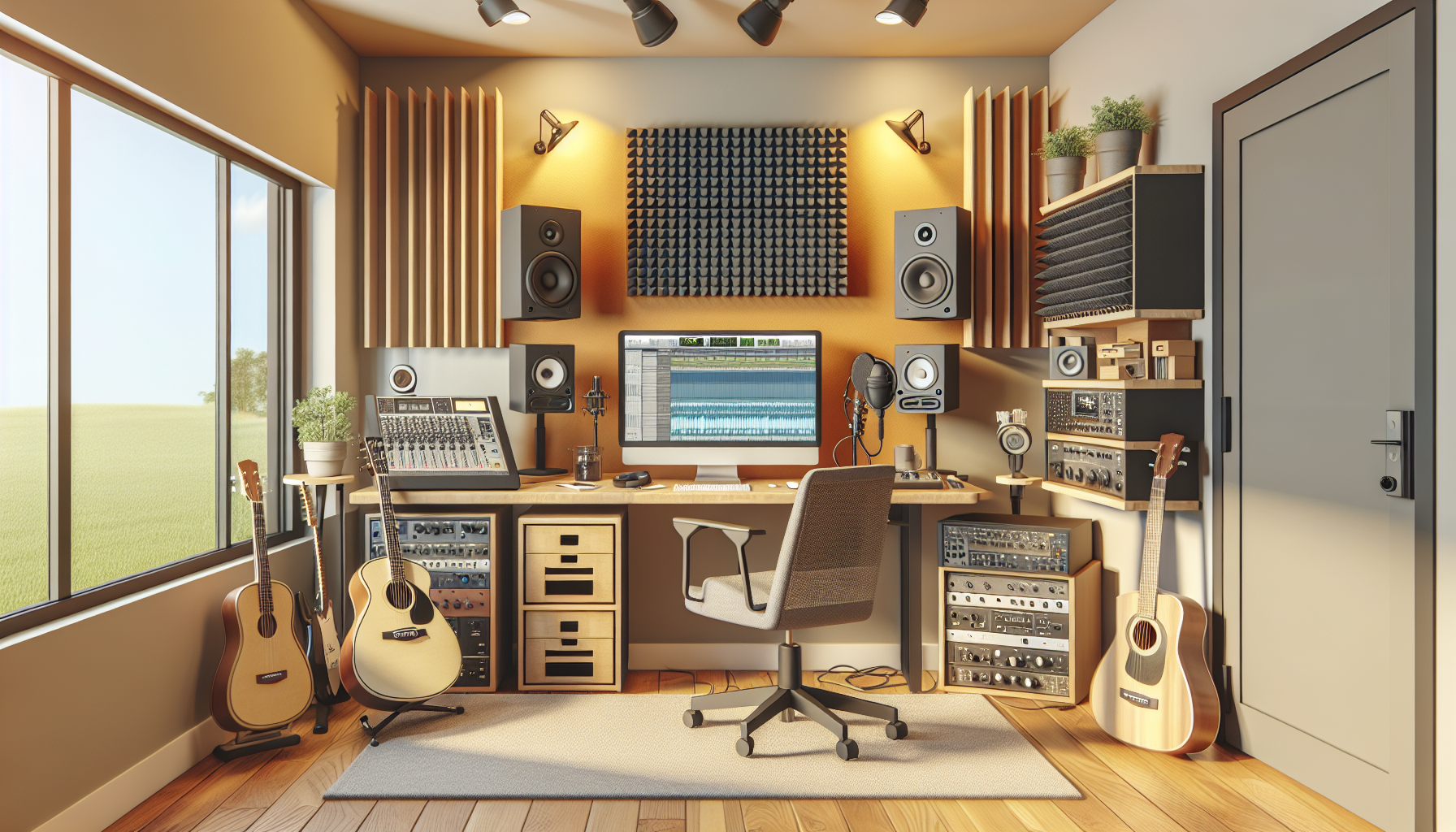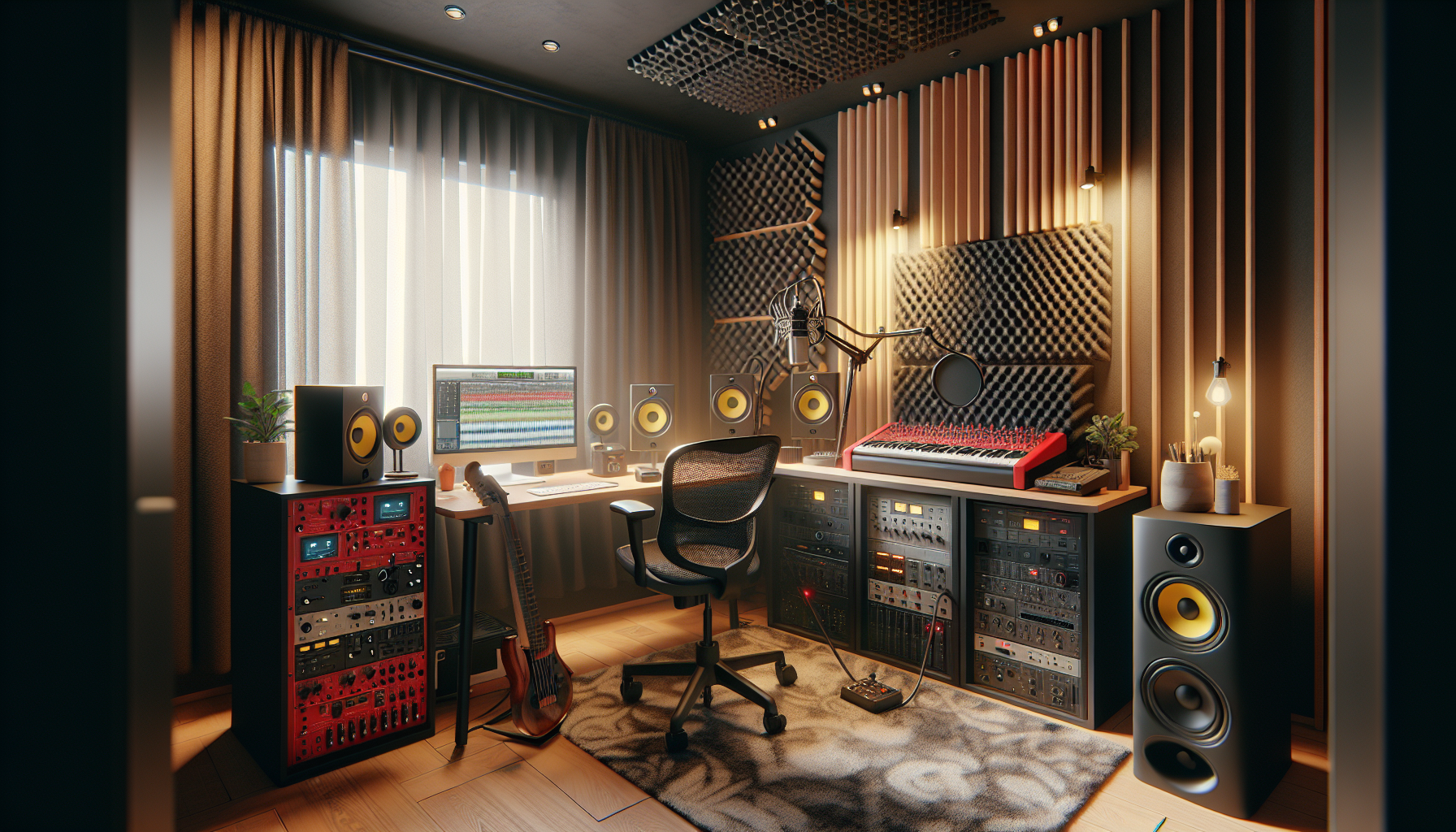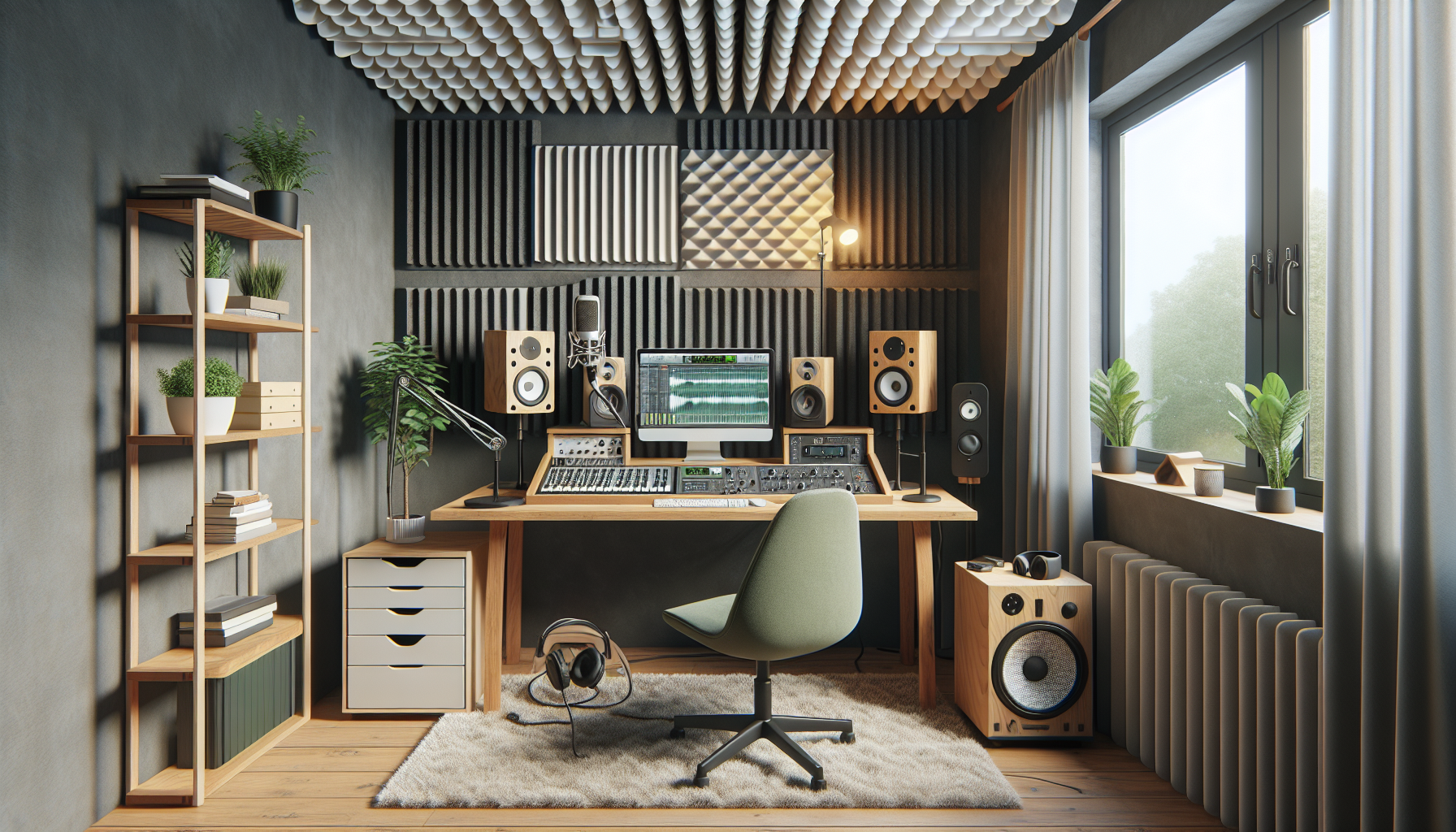Essential Home Recording Studio Setup for Beginners
Introduction to Home Recording Studios
A home recording studio transforms your personal space into a creative hub, allowing you to produce professional-level music recordings from the comfort of your home. It’s an indispensable asset for musicians at all levels, offering the liberty to explore and create music without the constraints of time and high studio costs. This guide covers the fundamentals of a basic studio setup, including the selection of the right room, essential equipment, and key software, empowering beginners to achieve high-quality music production.
Selecting the Ideal Room for Acoustics
The choice of room significantly affects the acoustics of your home studio. High ceilings and non-square shapes are preferable as they help manage echoes and reverberations more effectively. Choose a space that is quiet and free from external noises such as traffic, appliances, or other household disturbances. Employing acoustic treatments such as bass traps and acoustic panels will further enhance the sound quality of your recordings.
Pro Tip: If options are limited, arranging your setup away from walls and corners will minimize audio distortions and improve recording quality.
Essential Equipment for High-Quality Recordings
The core of your home studio lies in the audio interface, which converts audio signals into a digital format that your computer can process. Beginners will find a basic two-channel interface sufficient to start. Invest in a large-diaphragm condenser microphone as it is adaptable for both vocals and various instruments. Additionally, studio monitors are crucial as they provide an accurate sound representation. This ensures what you record is exactly what you hear.
Pro Tip: Match the microphone to your primary needs. For instance, a dynamic microphone suits loud sound sources such as drums, whereas a condenser microphone is perfect for capturing finer vocal and acoustic details.
Effective Equipment Setup
Initiate your setup by linking your audio interface to your computer using a USB or Thunderbolt connection. When positioning the microphone for vocals, place it about six inches from the mouth, just above the lips, and angle it towards the mouth to capture optimal sound. Arrange your studio monitors at ear level and in an equilateral triangle with your listening position to achieve the best stereo sound.
Pro Tip: Organize your cables with cable managers to maintain a neat workspace and prevent recording interference or damage to cables.
Choosing the Right Software
Your recording journey requires a Digital Audio Workstation (DAW) to handle recording, editing, and mixing tasks. Beginners will appreciate user-friendly options like GarageBand for Mac or the free Audacity, available on various platforms. Start by setting up a new project, ready your audio tracks, and dive into recording. Learning basic editing functions such as cutting, fading, and applying effects will enhance your recordings further.
Pro Tip: Opt for a 24-bit depth and a 48kHz sample rate when setting up your project, striking a balance between high-quality recordings and manageable file sizes.
Optimizing Your Studio and Advancing Your Skills
Maintaining your equipment regularly and keeping your studio clean are key to preserving the quality and longevity of your setup. To elevate your skills, engage with online resources such as tutorials, forums, and courses that specialize in home recording. Try various microphone positions and acoustic settings to discover the optimal arrangement for your music style.
Pro Tip: Master keyboard shortcuts for your DAW to streamline your workflow and make music production more efficient.
Conclusion
Embarking on setting up your home recording studio represents a bold move towards realizing your musical aspirations. You now know the essentials needed for a successful studio and the significance of a conducive environment. Continuous improvement, driven by ongoing learning and experimentation, is the cornerstone of proficiency in music production. As you evolve, keep tweaking your setup to match your growing skills.
Ready to start your music production journey? For further guidance or to explore advanced recording techniques, don’t hesitate to contact us!


